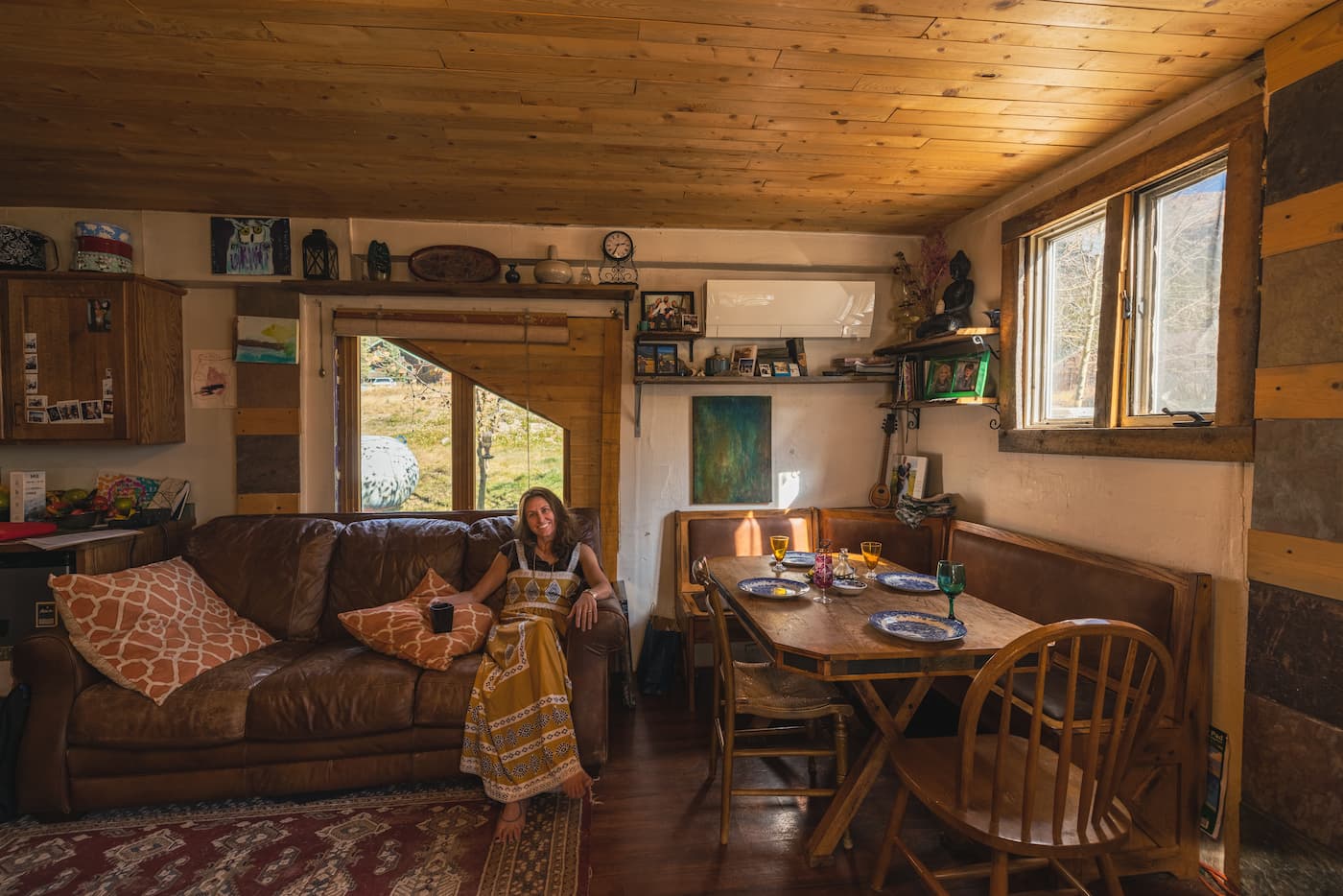
- High Country Conservation
- June 24, 2024
- Ask Eartha
Dear Eartha, I didn’t expect my mountain home to be so hot in the summer. How can I stay cool inside this season while being eco-friendly too?
Even in our mountain region of Summit County we’re feeling the impact of global temperature rise, with warmer winters and summer temperatures regularly topping the records in recent years. The NOAA has already predicted an especially hot summer for us in 2024. It sparks a challenging question that we never thought we would ask ourselves in our mountain dwellings – how do we cool off? Most houses in our community don’t have AC because it hasn’t been necessary in the past, but more and more homeowners are seeking cooling solutions for the hottest months of the year. Fortunately, there are several sustainable strategies to keep your home comfortable in a warming climate.
Block Out Solar Heat Gain
Heat from the sun is one the biggest reasons our mountain homes get so hot. Keeping window shades closed from first thing in the morning through the heat of the day can make a huge difference in staying cool inside. Options like cellular shades are great at keeping heat in during winter and out in the summer and can reduce solar heat gain by up to 60%.
Get the Most of Natural Ventilation
One of the simplest and most effective ways to cool your home is through natural ventilation. Beyond opening a window when you feel warm, we can strategically use natural airflow to help make the entire space more consistently comfortable.
During the lower temperatures in the evening and early morning hours, open windows and doors on opposite sides of the house to allow cooler air to flow through your home. Close them before the day heats up to trap the cool air inside. You can also take advantage of the stack effect by opening windows at both low and high points in your home. Warm air will rise and exit through the higher windows, drawing cooler air in from below.
Use Ceiling Fans Properly
Ceiling fans can help circulate air and create a cooling effect. What many people forget is that switching the direction ceiling fans turn can help rooms feel more comfortable in different seasons. In the winter, these fans should turn clockwise at low speed to gradually circulate cool air up and warm air back down from the ceiling. But when the weather warms up, flip the switch on your fans’ motors to make them turn counterclockwise at higher speed to push cool air down and create a slight breeze.
Insulation and Air Sealing
We often think of insulation as a good way to keep our homes warm in the winter, but good insulation and air sealing can help keep the heat out in the summer months too and prevent cool air from escaping. The best way to determine where your home needs better insulation and air sealing is to sign up for a home energy assessment online.
Minimize Heat Sources
Turn off unnecessary lights and electronics, as they can generate heat. Incandescent bulbs emit a lot of heat. Switch to LED bulbs, which are cooler and more energy-efficient. Use heat-generating appliances, like ovens and dryers, during cooler parts of the day.
Evaporative Coolers
For a more active approach to cooling, you could use an evaporative cooler. Also called swamp coolers, these devices cool air by passing it over water-saturated pads and circulating it through your home. Evaporative cooling is especially effective and energy efficient in dry climates.
Superior Climate Control
If you want an option that does it all, consider a cold climate heat pump. These systems provide both heating and cooling, offering you complete temperature control. To do this, it operates just like your refrigerator, only it can run in both directions depending on what’s needed. These systems are also ultra-efficient and run on electricity, making them an excellent environmental choice. There are major incentives out there, including a local rebate up to $4,000, to bring down the cost of these systems. If you need a dedicated system to help cool your home, a cold climate heat pump is definitely worth a look.
As we face increasingly hot summers, even at high elevation, it’s important to stay cool and maintain a comfortable living space with strategies that keep the planet cool too!
Ask Eartha Steward is written by the staff at the High Country Conservation Center, a nonprofit dedicated to waste reduction and resource conservation. Submit questions to Eartha at info@highcountryconservation.org
